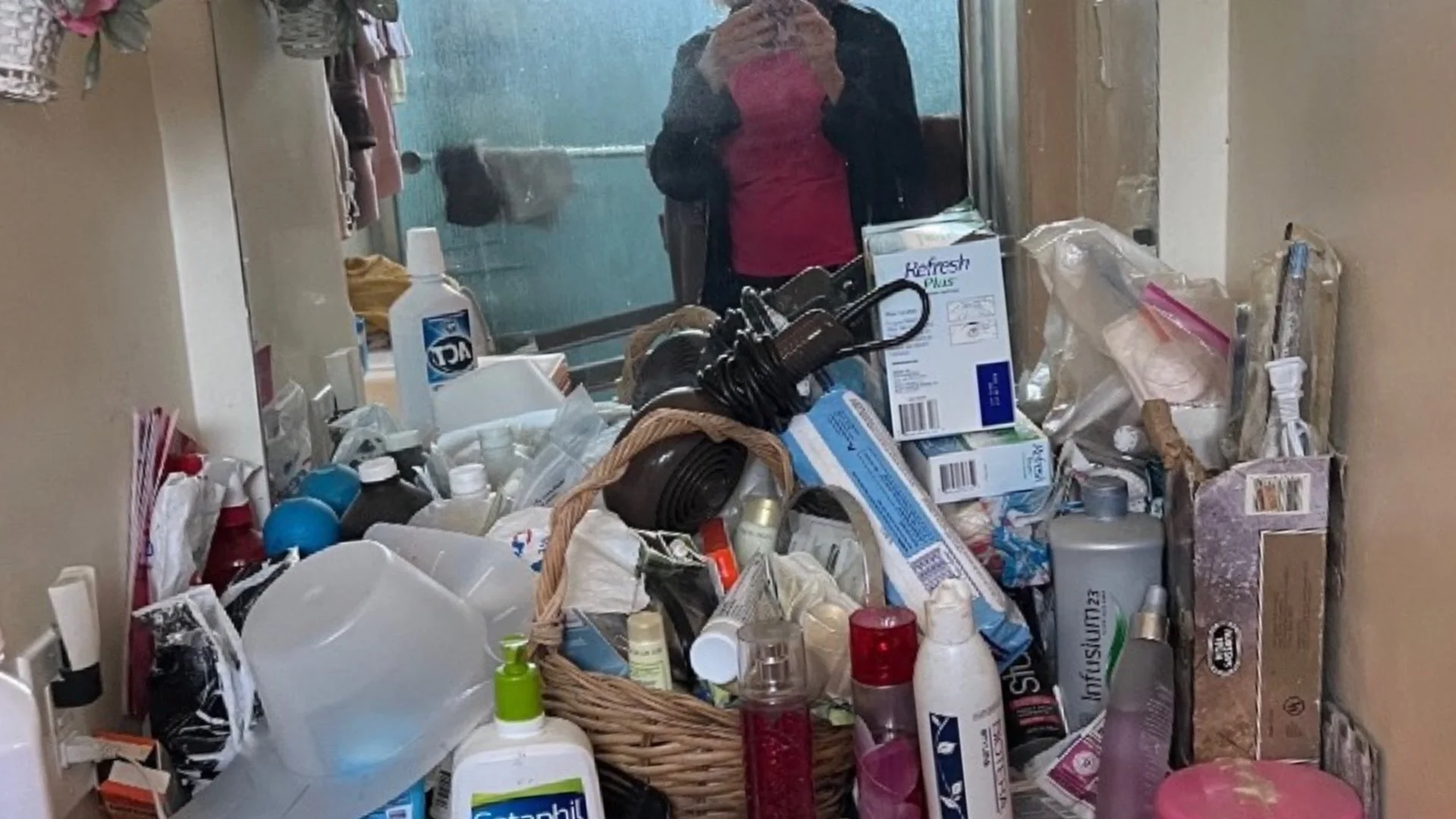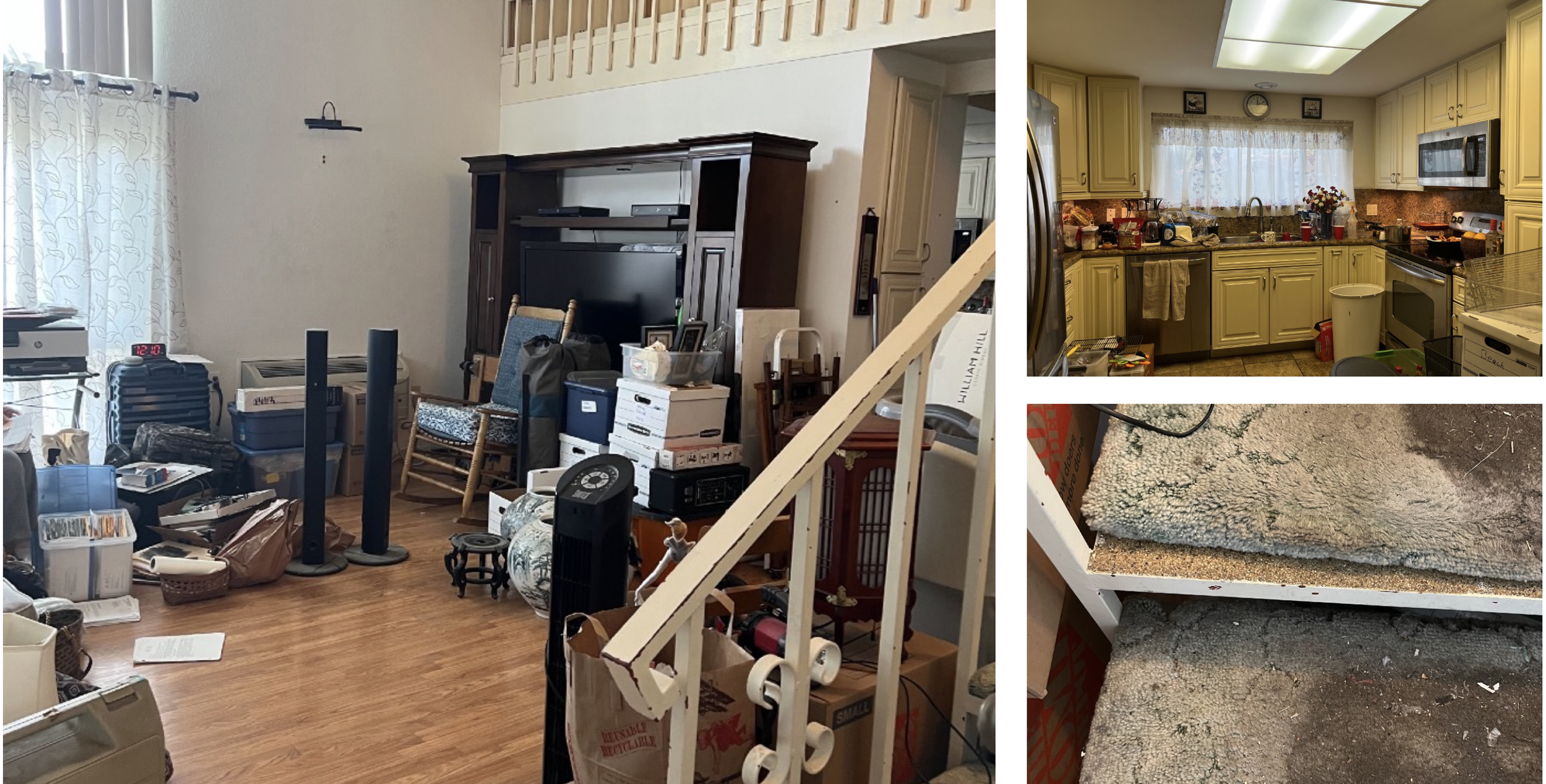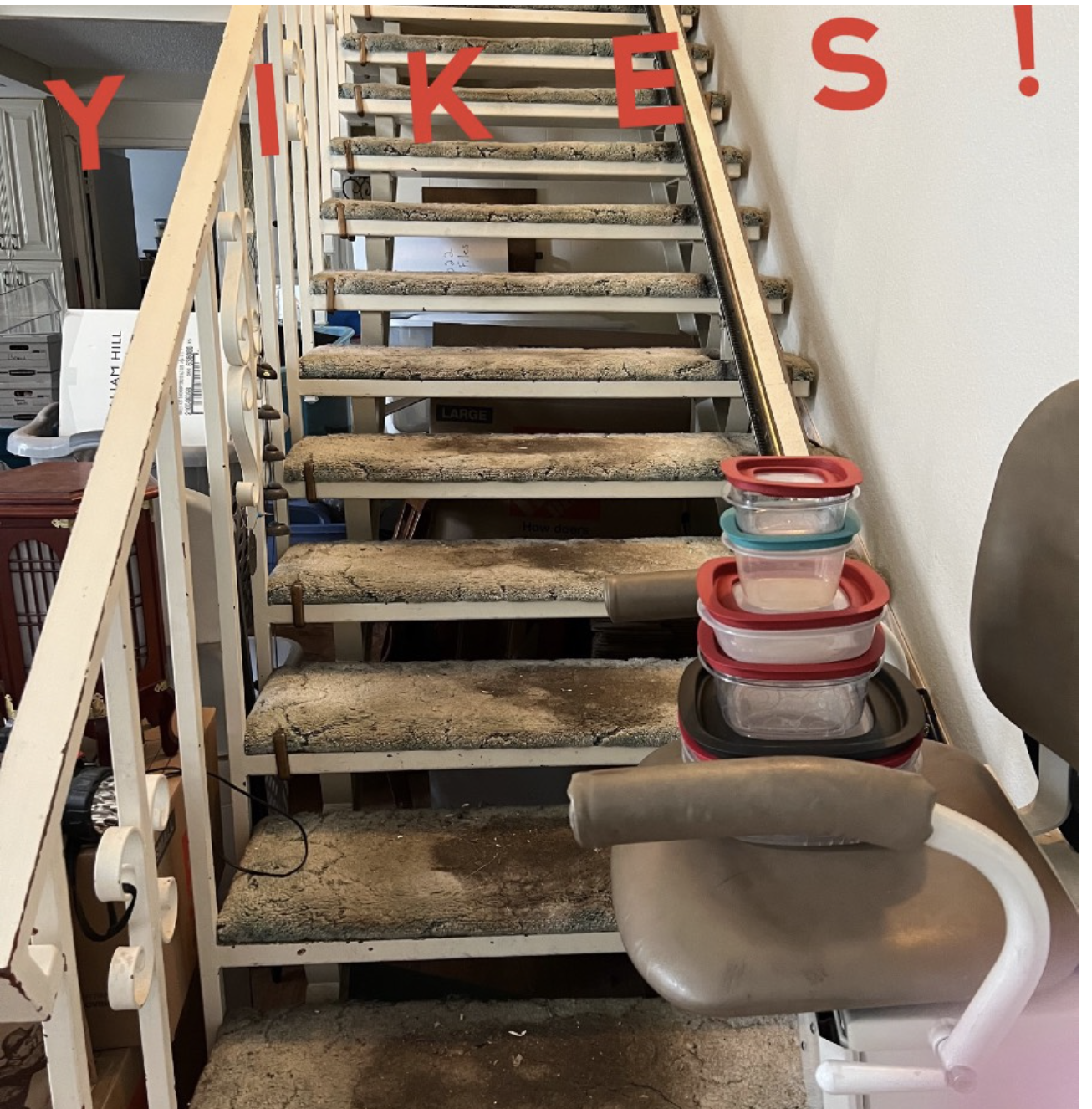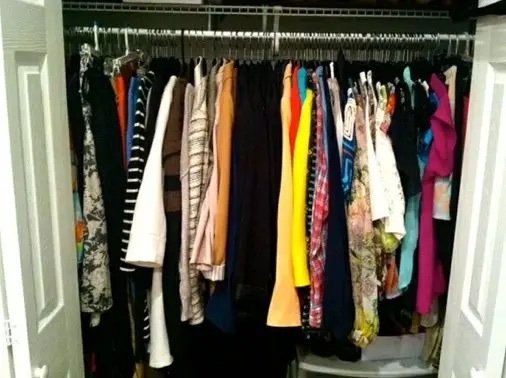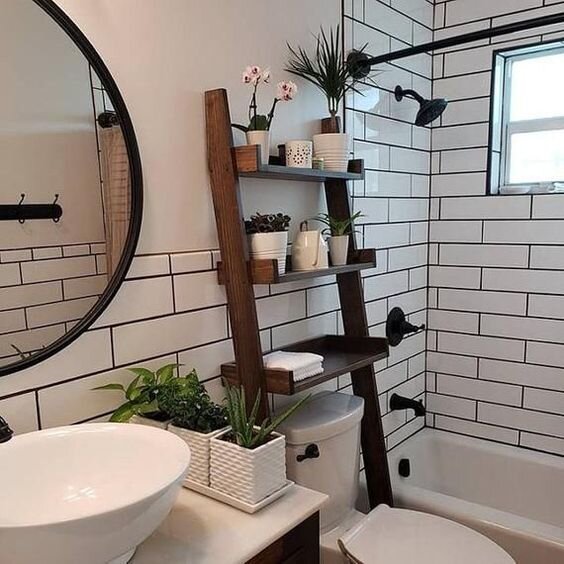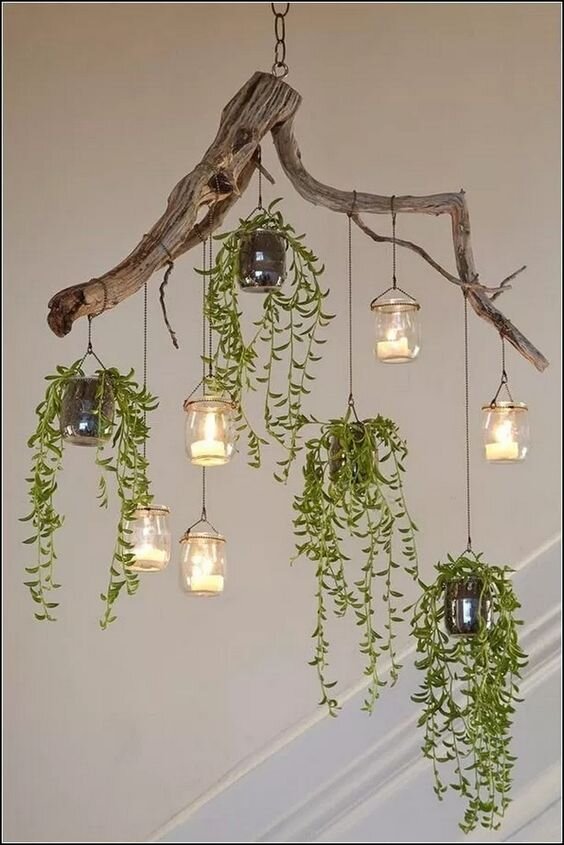Hoarding and Home Sales
I recently listed a home that was owned by a lady that was a hoarder. Although not as horrific as we may have seen on TV or Youtube, this was a real problem for a realtor, charged with getting a property on the market as soon as possible.
Cleaning Day!
This is what twenty-five years of hoarding looks like!
Although not filled with garbage bags or dead animals, this home was jam packed to the ceiling with household items…times a thousand! Boxes of books, magazines, kitchen gadgets, tools, papers, lined every wall, leaving a narrow passage way to the kitchen, and bedroom. NOTHING was thrown away for years.
The kitchen after three days of work!
Sunshine finally! Books and boxes covered the windows…
I was instructed not to open the refrigerator because of the smell!
Much of the furniture, and kitchen appliances were sold, or donated. Nothing was of any great value, and 75% of the clutter went right into the trash.
We decided not to physically stage this house, for a couple of reasons..We cleaned and de-cluttered as much as possible, but the walls and floors were still in poor shape, and there were some lingering items that we did not have time to discard. Also, we could not ensure that the stager’s furniture would be safe in this still dingy space, and, anyway sometimes trying to pretend that an abused house is anything but what it is, is a waste of time. We sold the home As Is.
And here’s after, with digital staging…
Since there was still a few items that couldn’t be removed in time, my photographer removed them with editing software. She also added virtual furniture, and other elements. What a difference!
Although physical staging is preferable, there are times when, because of time, and budget, it’s simply not possible, but as you can see, staging is a vital part of the marketing!
Make de-cluttering Fun!
Before beginning a conversation about clutter or organization it’s essential to remember not to judge oneself for not being organized or being a clutter bug. There is no virtue, per se, in being neat or organized. Neatness and organization are practices that support our peace of mind. A decluttered mind gives us peace in our soul. That’s the goal. Organization is only the tool.
Here’s a simple and easy first foray into decluttering.
Did you know you can declutter your closet without removing a single article of clothing?
That may seem unlikely as we think of a cluttered space as having too great a volume of items. And that is definitely the case in most spaces.
But some spaces can be decluttered simply by bringing order to items contained in the space.
Here it is important to note, that there is no right or wrong way to organize a closet. Some people choose to organize by color, some by season, some by function (dressy or casual or work). Some people incorporate all of these!
The ordered closet really exemplifies the problem that clutter actually represents - it clutters our mind causing confusion, lost time, frustration and often finally depression.
So, having fun with ordering the closet provides the perfect place to practice a declutter state of mind.
And it’s simple. Just put your clothes together by color. All the white pieces together, all the pink together, all the red and so on.
It’s also easy. It doesn’t have to be done all at once. Just put all the whites in one place today. Another color another day.
Here are all the ways it helps. First visually. You can have fun with any pattern that is pleasing to your eye. When I started I went for lightest to darkest. . White, yellow, pink, red, blue, brown, black. Very sensible!! After a few months, I switched a few items which takes like fifteen minutes and put my yellow, pink, green blue, purple together to have a rainbow in the middle part of the rod. My clothes are a pretty display for my eyes even when I’m not searching for something to wear.
Searching for something to wear. This method really cuts down on that. Searching for an item takes 30 sec. as opposed to 10 minutes and there is absolutely no frustration. I know exactly where in my closet to look for a certain blue top. I look in the blue section. Or if I think blue is the color top to wear with my choice of trouser or skirt, I can peruse the blue section for just the right one.
So, here I’ve actually decluttered my mind. Again, that is the point of decluttering any space. Our mind is the space we actually want to have clutter free. Our surrounding environment simply aids us in achieving that state of mind, which is a thing greatly to be desired.
Love the earth. Here's a few ways...
We all love mother earth and care about her health and keeping her ecosystems robust and functioning for the health of all of us..right?
Not too many people would disagree. But, stuff gets in the way. There are other pressures too. Many industries that are polluters also happen to be big players in our social, political and economic considerations.
Not to mention the millions of people employed either directly or indirectly by those industries. We’re conflicted. We may also feel powerless in the face of this mire of competing interests. Where do we start? We’re too small to make a difference or be of any help.
Here are some ideas to help out that actually pack a lot of power in our effort to save the health of our little blue planet.
First… love it. Love our planet. As far as we know, there’s nothing else like it in the universe. The very fact that we can be living and experiencing is because of the existence of this unique planet spinning in space. That’s reason enough to be grateful to it and for it.
What do we do when we love something or someone. We treat it with respect, kindness and attention. We pay attention to the little things that person or pet needs. The little things are the big things. It is only in practicing the little things that we then gain insight about the bigger things.
So that’s first. Just love and be grateful to her. You’ll know how to behave and what to do when you come from love.
Next, as you pay attention to the little things you can do to show your love, share what you’re doing. Tell neighbors, friends and post on social media. There are those who feel so overwhelmed who appreciate the tips you share with them.
Here’s something we’re doing at our church. This writing is October of 2021, so we’re moving back to in person church services. Our particular practice is to share communion every Sunday. (Protestant sects don’t necessarily share communion every Sunday, but ours does).
So, we need to think of how to share communion in person with Covid precautions in mind.
I’d visited a church where a Covid remedy for communion was individual tiny plastic containers that hold both the juice and the wafer. Very clever. In years past I’d applaud this free market, inventive solution to a need in the market place. But now, no. Because now I’m aware that As much as we like to think that plastics are recycled, it just does not happen on a wide scale. So, I asked the diaconate not to use that remedy.
As a group, we we’ll discuss a number of ways to share without compromising health. I’m thinking we might hit upon a remedy that many churches might adopt. Then other institutions and businesses may modify such a remedy to their respective gatherings/meetings, etc.
So, that’s one thing.
One other fronts
It’s not easy but I make the effort to use only durable plastic. Yes, I confess! I have the drawer !- the one with the Reynold’s wrap and the plastic roll and even ziploc bags of two sizes, the sandwich bags. Here, I beg your forgiveness for my hypocrisy and ask you to read further.
I wash and re-use Ziploc bags until they’ve formed a hole or lost their zip! They are a useful product. Here I could probably also use durable plastic, though, and even glass. It’s the transportable convenience of the bags that makes them so handy. Without them, We’d forever be returning each other’s Tupperware containers. Our pantries would either be bare of containers or a Fibber McGee’s closet busting with containers without matching lids and vice versa.
And in the area of school lunches, most moms don’t want to ask their 6 or 7year old to keep track of a durable plastic and bring it safely home safely home from school. We’re just glad our children are back home safely. Plus, we don’t want them burdened with any more responsibility than necessary at those young ages; they have plenty to think about - playing and learning and navigating through life.
But, a 12 year old’s concerns about the planet and the oceans presents the perfect time to put them in charge of graduating from little kid convenience of throw away plastic to adult awareness of reusable . You’re now partnering with your child in an endeavor he/she wants to take part. It’s essentially a small rite-of-passage on the way to adulthood.
Of course at this age your kids probably buy their pizzas and burgers and fries at school or nearby take out. If the school isn’t using only paper or reusable durable plastic dishes, you and your family might present the school with the challenge to do so. Aha, you say, what about the paper being thrown away. I have only one word answer - biodegradable. There’s no more evidence that paper is any more recycled in trash collection than plastics are. But, the biodegradability of paper at least doesn’t threaten wildlife.
We still have a long way to go to get all the systems in place that properly reuse our human made products. So while we’re haranguing our representatives and corporations and voting at booths with our ballots and cash registers with our dollars , these are just a few steps we can take.
Please comment on the ways that you show love to our mother earth so we can incorporate them into our routines.
Thank you!
Carla
Real Estate Market Update
How long will the current seller’s market last?
To put the following information into context, allow me to restate what most everyone knows - that we have been in an extreme seller’s market for a year. We have all heard about the multiple offers, the homes going many 10s’ of thousands above asking, buyers having to make offers on home after home after home to finally get one, and other extreme stories.
Hot Seller’s market
The reason for this Is probably obvious - supply and demand. There are not enough homes on the market for all those who want to buy.
Young people are more convinced than ever that homeownership is something to which to aspire.
Adding to the high demand are the record low interest rates, 2.8% at this writing.
These factors, together, keep what sellers there are in the very desirable position of high buyer demand for their homes.
So, now the question is
“How long will this last?”
Although I don’t have a crystal ball, here are some facts at hand that can enlighten us.
(If you’re a visual person and you happen to like graphs, there are graphs below illustrating each point)
First, in average years, July and August are the months that we see the highest new listings/homes for sale. This year - The active listing inventory decreased by 239 homes in the past two weeks, down 9%, the largest drop of the year. In August there were 12% fewer homes that came on the market compared to the three year average between 2017-2019. (We don’t count 2020 as it was a skewed year due to Covid).
So, We experienced fewer new homes coming on the market in months where we normally have more new homes coming on the market, only intensifying the shortage of homes!This bodes well for sellers because a great many homes would have to come on the market to fulfill all the demand for homes. So, if a homeowner is thinking of selling in the next three to six months, it will probably work out well for him/her.
Light green bars - Available Homes / Dark green bars - Homes sold
But, what if interest rates rise? Won’t home prices have to go down as a result?
If jobs numbers continue to do well, the FED may allow rates to rise. However, rising rates can lead to inflation, so any increase will probably be done very slowly. Even if the FED determines that interest rates should rise, it will be done in such a way as not to spook the investment markets.
There will come a time, as always does, when many homeowners decide all at once to put their homes on the market. At this point, it would be this event of many going new listings flooding the market that could create a downturn in house prices.
But what about foreclosures? Could that cause a flood of new listings?
Very rare that a homeowner would suffer foreclosure at this time. Every homeowner has gained significant equity in the last couple of years. If a homeowner is not able to pay the mortgage payment, he/she can sell their home, take the equity and perhaps purchase something smaller.
Indeed, both short sales and foreclosures combined, made up only 0.6% of all listings. There are only 10 foreclosures and 3 short sales to purchase today in all of Orange County. That number would have to rise manyfold for it to have impact on housing prices.
In addition, those homeowners who were current with payments and had sufficient FICO’s refinanced within these last couple of years to make their mortgages more affordable than they’ve ever been.
In short, it looks good for seller for a while if all progresses as expected. Buyers will continue to enjoy great interest rates, even if they rise some over time.
The only challenge to buyers is that sellers have a perception, and at the current time, the misperception that the fall and winter months are not good times to sell.
Nothing could be farther from the truth.
As has been shown here, demand is high and buyers will seize opportunity through the year in large numbers.
If you are thinking of taking advantage of this great market and want to list your home with an agent who knows how to take your home value to the maximum…
call or text me today.
Carla Jones
714 310 3591
7 Things you should NEVER put down your garbage disposal!
If you spend a lot of time in your kitchen, you know how your garbage disposal can be your best friend. However, that relationship can quickly turn sour when harmful materials are dumped down your drain. To help you avoid some common mistakes that could cause a lot of damage!
1. Bones
Because the blades in your garbage disposal are not angled, thy are not equipped to grind extremely hard items like bones. If these bones make it past your disposal, they certainly won’t make it down the drain pipes. As a result, you could be facing expensive plumbing repairs down the road.
2. Egg Shells
Although there has been some debate over this one, it made our list due to the sticky membrane lining of egg shells. While the actual shell can arguably sharpen your disposal blades, there is the risk of the membrane lining sticking to the sides of the disposal, wrapping around the shredder. Therefore, we recommend playing it safe and keeping egg shells away from your disposal.
3. Fruit Pits
Another major no-no is putting fruit pits down your garbage disposal. This includes the smallest cherry pits to the larger peach, avocado, or nectarine pits. Simply put, if you cannot cut these pits with your sharpest kitchen knife, you can assume your disposal blades certainly won’t be able to, either.
4. Fats and Grease
Just like your shower or sink drains, your kitchen sink drain should be a grease-free zone. Because fats and greasy substances tend to adhere to your pipes and lead to clogs, you should keep them out of your disposal. If you do accidentally pour grease or fat down your disposal, try running hot water down the line.
5. Stringy Foods and Peels
Because stringy foods tend to get tangled around your disposal blades, we advise against putting them down your sink drain. Also, you should avoid vegetable and fruit peels, as they can create a thick paste that builds up on the blades. Even if this paste makes it past the disposal, it can clog your pipes and cause waste back-up. Here is a list of foods to avoid putting down your disposal:
Celery
Artichokes
Asparagus
Pasta
Lettuce
Carrot Peels
Potato Peels
Corn Husks
Onion Skins
Raw Meat
Oatmeal
Nuts
Rhubarb
Pumpkin Guts
Banana Peels
6. Coffee Grounds
While many may tell you that coffee grounds are a great way to neutralize odors, they can wreak havoc on your disposal and your plumbing. If coffee grounds form into a dense, packed paste when you take them out of your coffee filter, imagine what they can do to your drain! Avoid severe clogs and damage to your plumbing and keep coffee grounds out of your disposal. As a safer deodorizer, you can make vinegar and citrus ice cubes to use for your disposal. In addition to freshening your disposal, these vinegar and citrus cubes will sharpen the blades. Here is the quick and easy recipe for these refreshing cubes:
1) Chop Citrus Fruit –Start by chopping citrus peels into small pieces. You can use lemons, oranges, limes, grapefruit, etc.
2) Fill Ice Tray –Then, place 5 to 6 pieces of the citrus fruit into an ice cube tray and fill it with vinegar. You can squeeze leftover juice from your fruit pieces into the trays for some extra freshness.
3) Freeze Until Solid –Next, freeze the cubes until they are solid.
4) Store Extra Cubes for Later –Lastly, store extra cubes in a freezer bag or other storage container for future use.
7. Cleaning Chemicals
Although everyday cleaners like dish soap are perfectly safe, you should keep harsh drain busters and industrial-grade cleaners out of your disposal. Avoid chemicals like bleach or drain cleaners. Instead, you can opt for Borax, which is a natural sink cleaner and sanitizer.
End of Covid! Stepping Back In!
Like many of my fellow American, and world, citizens, my husband and I took the precautions that came with COVID seriously. We followed prescribed guidelines of going out only on necessary trips such as to the grocery store. In March and April of 2020 that was a daily excursion as we attempted to time our visits to the restock of items we needed. We never had success with toilet paper…remember? A friend brought us a twelve roll package. Bless you, Jon and Aileen.
We voluntarily masked when out anywhere.
My networking groups, club meetings and even client meetings were conducted via Zoom.
As a side note, how tremendous a blessing technology was during this time. There were many that kept employment because of technology . (It made me wonder how isolated people felt a hundred years ago when even a telephone wasn’t accessible to most folks ?!)
We ordered out from restaurants at least once a week if not more, watched online concerts and “tipped” the band the cost of a ticket. It was the least we could do, being relatively secure in our situation.
Now, we begin the rebuilding, and the “collective we” hope to make rapid progress so that those who did lose employment will be able to repair the damage done to their finances and security.
Some will dip their toes into a new normal and some will dive. I’m more of a “dipper” I know those pesky viruses. Like any life form they just wait for their opportunity.
Here’s some fun things I’m planning for the open up as we test the waters.
We’ll be spending our anniversary at Huntington Library in San Marino. Almost all outdoors, soaking in beauty in various forms, natural and architectural and art. Of course, top it off with a restaurant visit..or take out, whatever seems right at the time.
The Beach - Even Pre-pan times I preferred a little distance from the other bathers.
So, I’ll spread out my sheet, stake my claim with an umbrella. A nearby lunch spot will supply our picnic lunch. Munch a bunch, read a book, and enjoy the sights, sounds, smells and textures of our magnificent Pacific coast. Ah, the smell of suntan lotion…that’ summer!
In the water itself, that’s where I dive, or least submerge.
See you soon!
Carla Jones
Ten top air purifying indoor plants
Because of the pandemic, We have been spending much of our time at home. Perhaps this is a good time to think about our environment, and take a look at some common house plants that actually improve the air that we are breathing as well as beautifying your space. Here are ten (there are many others) of the most popular air-purifying in-door house plants.
Bamboo Palm
Chamaedorea seifrizii
Since the bamboo palm, or reed palm, prefers part sun or shade, it makes a great houseplant with the added benefit of aiding in the removal of harmful elements such as benzene and formaldehyde.
Gerbera Daisy
When placed indoors, this popular annual is useful in removing benzene and providing mood-enhancing beauty to the home. Since the bamboo palm, or reed palm, prefers part sun or shade, it makes a great houseplant
Spider Plant
Chlorophytum comosum 'Vittatum'This easy to care for houseplant thrives in bright, indirect light and works hard to remove the air of harmful pollutants like formaldehyde and benzene. Spider plants dislike soggy soil, so let them dry out slightly between waterings.
Philodendron
Philodendrons come in a variety of sizes and colors, and their leaves can have many different shapes. Like 'Xanadu,' the variety shown here, these plants adapt easily to most homes with medium to bright, indirect light. Researchers say they remove indoor toxins like formaldehyde, which may be present in carpets and cleaning products. toluene, carbon monoxide and xylene. These vining tropicals tolerate low light, although it may make their leaves revert to solid green. Use them in hanging baskets or containers and let them trail over the edge of a table.
English Ivy
Hedera helix
Beautiful as a groundcover or a houseplant, English ivy is a classically elegant choice. It tolerates low light conditions and removes pollutants from the air especially Formaldehyde.
Chinese Evergreen
Aglaonema modestum
The Chinese evergreen is an easy-care plant that thrives in low to medium light. It generally grows to one or two feet.The Chinese evergreen is an easy-care plant that thrives in low to medium light. It generally grows to one or two feet. Though it helps to maintain healthy air quality in the home, it is important to note that the Chinese Evergreen can be a skin irritant, so be careful.
Pot Mum
Chrysanthemum morifolium
Good for removing benzene, the pot mum is also a colorful addition to the home in fall when many other flowering plants are past their prime.
Pothos
Epipremnum aureum
Pothos earned high marks in a NASA clean air study for clearing the air of benzene, formaldehyde, toluene, carbon monoxide and xylene. These vining tropicals tolerate low light, although it may make their leaves revert to solid green.
Ficus
Ficus benjamina
NASA found that ficus trees, or weeping figs, improve indoor air by removing pollutants like formaldehyde and xylene. Weeping figs are very sensitive, and their leaves can turn yellow and drop when you move them to a new location or change your watering habits. The leaves usually grow back when the plant adjusts. Most ficus like bright indirect or filtered light. Give your plant high humidity and wait until the top of the soil is dry before watering. It can remove toluene, carbon monoxide and xylene from the air.
Parlor Palm
Chamaedorea elegans
Parlor palms, popular during the Victorian Era, are still popular today, thanks in part to their ability to adapt to the low light conditions found in most homes. According to NASA's study on plants that clean the air, they can also remove benzene and trichloroethylene toluene, carbon monoxide and xylene from your home or workplace.
Bamboo Palm
Chamaedorea seifrizii
Since the bamboo palm, or reed palm, prefers part sun or shade, it makes a great houseplant with the added benefit of aiding in the removal of harmful elements such as benzene, formaldehyde, and trichloroethylene, an industrial solvent.
Seven Tips That Will Solve Your Rodent Problem!
The recent cold weather may have invited some unwelcome house guests. Rats and mice are looking for a warm place to live, and plenty of food, and your cozy home is perfect!
If you are experiencing an infestation, it’s a good idea to tackle the problem ASAP, because if vermin feel welcome, they will stay and multiply. Experts say, if you see one, you can bet there are almost certainly others living in the warm recesses of your living space.
Traps come in different types. We all know the snap traps, but there are others. Here is a live trap that is cheap and works great. Harris Catch and Release Cage.
In any case, here’s how to get the best results when it’s time to set traps.
Keep Your Hands Off
Mice can detect your scent on traps you've handled and may then stay away from them. To prevent that, wear gloves when handling mouse trap bait and setting mouse traps. Gloves used for food preparation, health care, or washing dishes all work well. (Be sure to wear gloves to handle a trap after it has caught a pest to protect yourself from disease.)
Pick Bait Mice Crave
Forget the old cartoon image of mice eating cheese. The rodents are primarily nut and seed eaters, so the mouse trap bait they are most strongly attracted to is peanut butter or hazelnut spread. Their hunger for calories also entices them to try chocolate. When temperatures drop outside, mice come inside, slow down, and focus on building nests, so you can lure them to mouse traps with materials such as cotton balls, dental floss, yarn, and twine. If using snap traps, tie or wrap the fibers around the mouse trap's trigger to force mice to pull or gnaw on the bait, springing the trap.
Only Use a Tiny Amount
When you load up mouse traps with a lot of bait, the pests can steal some of it without getting caught in the trap. A pea-size amount of mouse trap bait is just right - enough to attract mice, but not so much that they can eat it without springing the trap.
Make Them Comfortable First
Mice are naturally wary of new objects in the areas they frequent. You can acclimate them by putting out baited but unset mouse traps for a few days, whether you are using classic snap mouse traps, electronic mouse traps, or live traps. Once you see the mice taking the mouse trap bait, you know that the mouse traps are in the right place and that the pests will return to them. Then it's time to set the mouse traps.
Go to the Wall
It's easy to place mouse traps in the wrong place—don't make that error. Because of their innate fear of open areas, mice scurry around the perimeter of rooms and the dark recesses of your home, close to the walls, where their whiskers help them navigate. To catch pests where they are active, place mouse traps along walls where they primarily travel. The bait and trigger end of the mouse traps should be facing the wall so that mice will be tempted to explore them rather than walk around them. Whenever possible, place mouse traps in concealed areas, such as the backs of cabinets or behind your stove (pull out the drawer beneath the oven for easy access).
Set Several Mouse Traps Close Together
Mice reproduce fast and furiously—they can produce six to seven babies in a litter as quickly as every 21 days or so. So you may not realize (or want to think about!) how many of them are in your house, but you can be almost certain there are more than one. To stop an invasion of mice, you need more than a few mouse traps to eliminate the problem quickly. The most effective strategy is to place one mouse trap every 2 to 3 feet along the wall where you've seen signs of activity. In the highest-trafficked areas, set mouse traps in pairs as close as an inch apart.
Plan for a Big First Night
Studies show that more mice are caught on the first night you set out mouse traps in your home than on any subsequent night. So start your campaign to get rid of mice by setting mouse traps wherever you see signs of their activity, and use many mouse traps and a few different types of mouse trap bait to be sure your opening night is a rousing success.
Five things to consider if you're planning to Relocate
Relocating is a big decision and there are things you should consider before taking the leap and moving to a new area. be sure to do the research and make a sound decision by considering these five things before relocating to a new area.
Personal Relationships
If you’re single it may be easier to just pick up your life and move to a new area, but when you have family close by or a significant other moving with you, the decision becomes more complicated. You have to consider your partner’s career prospects, and your children’s reaction to moving away from their friends and family. You’ll want to really think hard about moving away from close family and friends and how those relationships will be affected
Moving Expenses
Depending on how far you’re moving, expenses can be high. You’ll want to ensure that you have a firm cost of those expenses from several different moving services. If you are moving for work relocation – check with your employer, they often cover moving expenses. Don’t have any surprises!
Cost of Living
You may be able to live comfortably on your current salary, where you live now, but how will your paycheck stack up in another city? Even a raise, may not cover the costs of living in a pricier area. When you calculate your new cost of living, include all of your potential outgoings, such as housing & food. Utility costs might be higher as well, so you’ll want to factor these in when deciding how much the cost of living will be. Also keep in mind the amounts of transportation, childcare, groceries and leisure activities. If you are moving to a different state, take note of potential tax liability.
Job Prospects
How easy is it to find a job in your new location? If you are moving for a job, you’ll want to consider other prospects if it doesn’t work out. If you are in a specialized role and opportunities in your industry are rare, you may want to research current job openings in your industry in the area you are looking to relocate to.
Location
Of course you’ll want to relocate to a safe area for you and your family, so make sure to research crime statistics in the area and neighborhood you are moving to. Also, the weather conditions – if you move to an area that is often hit with natural disasters, you may need to add to your insurance policy for things like flooding, etc.
Ready to take the leap? Connect with me today to discuss your real estate options!
Fullerton - The City Of Trees
Yes, it’s true! In the North Orange County area of California, Fullerton is known as the city of trees.
Downtown Fullerton.
Recently while arranging for the trimming of my grand Chinese elm, fig tree and fan palm by City Wide Tree Services, the owner, Ubaldo and I chatted about Fullerton’s trees. Ubaldo expressed that his hope is that all future generations will know the value of these great works of nature and honor as well as care for them.
Buyers, (and birds!) flock to Fullerton because of trees. You just can’t create the natural beauty overnight. It’s long established.
Fullerton was founded in 1887 and was, like most of California at the time, a land of orange, lemon and avocado orchards. Many will tell you the best avocados you’ll ever have come from the backyards of Fullerton homes. These trees are decades old or are the offspring of the original trees of Fullerton avocado groves.
Vast farms and ranches eventually were transformed into the smaller lots of city buildings and single family residences.
Many of the homes and public buildings in downtown Fullerton, and up into the hills in the 92832 zip code, were built before 1940. These homes, along with many prominent public buildings in the central part of the city create the wonderful feeling of yesteryear one gets walking through the gracious walkways and side streets of the town.
Stately, august churches and auditoriums built in the late 19th century and early 20th century sit along side quaint, picturesque homes of the same era.
And, the backdrop for it all are the majestic trees! Fullerton is one of the towns that has honored its historic beginnings and whenever possible protected the trees, encouraging planning around them and planting new trees along its many miles of trails that meander through the hills of Fullerton.
Individual residents of the city are more involved than ever in the care of our nature backdrop. Like folks everywhere we’re planting milkweed to attract butterflies, bee attracting plants and there is a flock of wild parrots that frequents the area in search of the goodies our trees yield!
The Heritage House built in 1894, at the Fullerton Arboretum.
If you’re someone who prizes the beauty of nature as a necessary part of your lifestyle, Fullerton is a great town to look for a home.
Call with your inquiries about Fullerton as a place to live or to learn the value of your home in Fullerton.
There are a number of fine tree services that know the area and its history. They and other vendors you may need are listed on the vendor page of my website. CJones4homes.com
If you’d like to know more about Fullerton. Visit my Fullerton page on the same website.
Jacaranda trees in full bloom.
What is a reverse mortgage?
Curious about how a reverse mortgage works?
More and more people of qualifying age (55 or older) are utilizing reverse mortgages or at a point where they are considering one.
The very term “reverse” mortgage raises questions with anyone who’s hearing it for the first time. How does “reverse” describe this particular mortgage instrument?
As I am not a reverse mortgage specialist or any kind of mortgage specialist, (I’m a realtor), I thought it might be helpful to hear about them from me, a person who has no vested interest in promoting the reverse mortgage.
As a realtor, I simply want to inform clients and the public at large about the tools they have available to them, that may best fit their particular circumstances. In addition, I have many experiences with clients who have either been selling a home with a reverse mortgage lien on their home or who have utilized it for purchasing a home.
So, in this article I’ll talk about two things. First, what a reverse mortgage is and how it operates. Second, what things to be aware of when choosing a reverse mortgage. And here, I’ll state my disclaimer. I’m not a reverse mortgage representative and the examples and insights following are not to be construed as professional advice about mortgages.
What is a reverse mortgage?
A reverse mortgage is a lien upon a home, just as any mortgage is a lien upon a property. A few basic qualifications are that the person obtaining the mortgage must own the home (you don’t need to own free and clear) The person must live in the home as that person’s principal residence. The person must be 55 or older.
The person may take up to 50% of their home’s value in a reverse mortgage. An example, your home is valued (by an appraisal) at $700,000. You still owe $100,000 on your current mortgage. Your current mortgage will now be wrapped into the new reverse mortgage. So you will have available to you up to $250,000. This is the amount available because $350,000 is 50% of $700,000 and the previous loan still owed is $100,000
The homeowner can take that money in one lump sum or can take it in monthly payments of their choosing. So, let’s say you take $2,000 a month. Interest begins accruing on the $2,000. The following month, interest is not accruing on $4,000, and so on.
Here’s the perk of the reverse mortgage, you need make no payments, ever ! There is no monthly mortgage payment !
The person lives comfortably in their home with no payments. Money continues to come to the homeowner every month, in this scenario. The loan need never be paid on until the homeowner sells the home or the homeowner dies. And, the home must be sold within six months of the homeowner’s death. (Extension of time may be applied for) No relative can move into the home indefinitely. The reverse mortgage company must be notified upon the homeowner’s death. In this scenario, the heirs, upon sale of the home will inherit whatever equity remains on the home. Say, the homeowner (the person who took the loan) accrued the full $350,000 on the loan. The family has $350,000 of equity remaining.
It behooves the family to sell the home in a timely manner, as interest continues accruing on the amount owed.
A reverse mortgage may be a good tool for an individual or couple to use the equity of their home for more immediate financial freedom. An individual or couple may wish to stay in their home instead of moving to assisted living. Monthly payments from the reverse mortgage can cover cost of caretakers or other outside assistance. There is, however, no requirements as to how the money must be used. It can be used for home improvements or personal purposes. The reverse mortgage company simply needs to determine current market value of the home through an appraisal.
Some people believe, erroneously, that the reverse mortgage company takes the title to the home. This is not true. Like any lien holder (mortgagor) of a property, the lien holder must be paid the total amount owed when the home is sold. As noted above, legal heirs receive the remaining equity upon the successful sale of the home.
This last point brings me to another point. In all cases, whether, reverse mortgage, regular mortgage or no mortgage, it’s always a good idea for homeowners to have their homes and other assets in a trust. It’s the legal work of determining who legal heirs are that eats into the heirs inheritance. A trust has already done this work and so protects the inheritance from court costs.
I hope this information has been helpful and clear, but if further questions remain about reverse mortgages, please call or email me
Rediscover indoor plants!
In the 1970s everyone had plants in their home. Most people had a plant or plants in every room. Everything was back to nature and we really celebrated plants with elaborate shelves and even macrame plant hangers. During the 80's, 90's and on this habit declined. Now, people are remembering how important and calming, and even healthy indoor gardens are.
Indoor plants are making a comeback and for good reason.
Studies have shown indoor plants:
Boost mood, productivity, concentration and creativity
Reduce stress, fatigue, sore throats and colds
Clean indoor air by absorbing toxins, increasing humidity and producing oxygen
Add life to a sterile office, give privacy and reduce noise levels
Are therapeutic and cheaper than a therapist
Why not invite some leafy friends into your space? Most are easy to maintain, and in expensive. It may be just the element missing from your home!
Carla
Happy New Year!
Happy New Year! This year instead of resolutions, or reflections of the past I’d like to share my favorite 25 quotes that might be inspirational as we look forward to the new year.
I’m going to start by being grateful for where I am in life, and knowing that no matter what my situation is, I will keep my goals and dreams in mind and start fresh from where I am. As long as I can dream, and make progress, I will get everything I ask for. Here’s to a great 2020!
Carla Jones.
1 Ben Jonson
"To the old, long life and treasure; to the young, all health and pleasure."
2 Dr. Seuss
"You’ll never get bored when you try something new. There’s really no limit to what you can do."
3 Frank Sinatra
"The best is yet to come."
4 Ellen Goodman
"We spend January 1 walking through our lives, room by room, drawing up a list of work to be done, cracks to be patched."
5 Beyoncé
"In our perfect ways. In the ways we are beautiful. In the ways we are human. We are here. Happy New Year’s. Let’s make it ours."
6 C.S. Lewis
"You are never too old to set another goal or to dream a new dream."
7 Edith Lovejoy Pierce
"We will open the book. Its pages are blank. We are going to put words on them ourselves. The book is called opportunity and its first chapter is New Year's Day."
8 Steve Harvey
"You are never too old to reinvent yourself."
9 George Eliot
"It is never too late to be what you might have been."
10 Alfred Lord Tennyson
"Ring out the old, ring in the new,
Ring, happy bells, across the snow:
The year is going, let him go;
Ring out the false, ring in the true."
11 Karen Kaiser Clark
"Life is change. Growth is optional. Choose wisely."
12 Germany Kent
"Never underestimate the power you have to take your life in a new direction."
13T.S. Eliot
"Every moment is a fresh beginning."
14 Mike Dooley
"Life's not about expecting, hoping and wishing, it's about doing, being and becoming."
15 Thomas Jefferson
"I like the dreams of the future better than the history of the past."
16 D.S. Mixell
"Many years ago, I made a New Year’s resolution to never make new year’s resolutions. Hell, it’s been the only resolution I’ve ever kept!"
17 E.E. Cummings
"It takes courage to grow up and become who you really are."
18 Josiyah Martin
"The magic in new beginnings is truly the most powerful of them all."
19 Carl Bard
"Although no one can go back and make a brand new start, anyone can start from now and make a brand new ending."
20 Taylor Duvall
"This year, be structured enough for success and achievement and flexible enough for creativity and fun."
21 J.P. Morgan
"The first step towards getting somewhere is to decide you're not going to stay where you are."
22 Socrates
"The secret of change is to focus all of your energy, not on fighting the old, but on building the new."
23 Nido Qubein
"Your present circumstances don't determine where you can go. They merely determine where you start."
24 Helen Keller
"Resolve to keep happy, and your joy and you shall form an invincible host against difficulties."
25 Eleanor Roosevelt
"With the new day comes new strength and new thoughts."
Buying a house.
Buying a house is one of the most important purchases you will make in your life. Owning a home gives your life a permanency, and a chance to build a life, and make an excellent long term financial investment.
If you are contemplating your first real estate investment, I wanted to lay out the typical purchase process for you. The more you know, and prepare now, the more successful your adventure will be!
Determine how much house you can afford. Get your credit score, and get a pre approval letter from a lender. Your Realtor can get you in touch with good lenders. This information will narrow the search criteria, so you can focus on the properties that are in your budget, and save a lot of time.
Think of your wants and needs. Big, small, number of bedrooms, bathrooms, two story, etc. The more clearly you can have the house you’re looking for in mind, the faster your search process will go, and the more likely you will find that house!
When you officially begin your search, you will be sifting through lots of possibilities, at first. Soon though, you will have seen the available listings and the new properties on the market will come to you slower. It’s important to realize that your Realtor has access to ALL properties for sale in the areas you are interested in, at the price point you have requested. This includes all properties on internet real estate sites, in fact your Realtor’s information is always more accurate, and current.
When you find a property you like, look it over, look the neighborhood over, and try to get a feel if this is a fit for you. Ask questions about lead paint, roof condition, easements, etc. Don’t be afraid to make an offer, at a respectable price. You are not under an obligation to complete the deal, until contingencies are removed, so now is the time for due diligence, and investigations to ensure that no major issues are lurking.
Escrow. When both side agree on price and terms, you enter escrow, usually a thirty day process that prepares documents and distributes money to the different parties.
A home inspection is not required, but HIGHLY recommended, to avoid surprises. The seller, hopefully will disclose every problem they know about, but often even they don’t know everything.
Everyone in the transaction will be monitoring the escrow daily to avoid and problems. Sometimes appraisal is an issue, if the appraiser (sent by the lender to make sure the property values at or below the sale price.) does not value the house at the asking price (does not happen often) the two parties can deliberate a solution.
Closing is the end of the process, after title searches and a final walk through is done, keys handed over and documents are signed.
Congratulations, you now have your new house!
The Importance of Home Staging
When you put your home up for sale, you should be aware of few things. You are now dealing a product, that must be presented in a way to get you the maximum price point you need (and deserve) to move on to meet your new goals.
The days are gone when buyers would look your house over, “kick the tires”, trudge through your house trying to figure out how your property would fit their needs. Shopping was done more by a tape measure, and imagination than emotions. And who knows how many buyers were lost because of smells, dinginess, dirty laundry, and clutter.
With real estate values today, a lot of money is at stake. Smart sellers (and realtors) understand that to get the maximum price for their property, they must incorporate the same tried and true principles used by any anyone selling products to the public. Whether it’s furniture, breakfast cereals, automobiles, a seller must do more than toss their valuable commodity into the marketplace and hope for the best.
Home buying is an emotional experience, and staging plays to that emotion. Forget about your aunt’s old china cupboard, raggedy ottoman and unmade beds in the kids’ room. Your home is now a product you must groom for sale. A little work now will net you several more thousands, and in a shorter time.
After the home has been cleaned, painted and decluttered, the professional home stager is now invited to come in and re-design the look of your space with new furniture and elements that are designed to dazzle buyers and show them what is possible.
Home stagers are skilled at what they do (which is magic), who can take any house and remake it into a breathtaking showplace with interesting furniture pieces, art elements and other visual tricks that will invite your buyers to have a positive feeling about your property, and get them excited about making an offer
Home stagers have a TON of inventory that they can bring to the client.
Like an artist’s palette they may include simple additions like
plants
silk flowers
rugs
love seats
pillows
inflatable beds
baskets
tables, chairs
mirrors
interesting coffee table books.
hanging artwork
The stager may even bring pieces to dress up a back yard patio or entry way.
The cost of staging varies but it’s usually $1000 to $3000 depending on the square footage, but this is easily made back by a quick sale, and higher offers. The fee can be paid at escrow, so no out-of-pocket money is necessary.
The great thing is, realtors have home stagers that they work with, as part of their team, and they can handle everything.
Call me if you have any more questions about staging or anything real estate.
Carla
714 310 3591
How to protect your deliveries from Porch Pirates
Porch pirates are what law enforcement are calling a new breed of opportunistic thieves that cruise around looking for easily grabbed delivery boxes left unattended on front porches.
More Americans are now buying goods by mail than ever before, and the coming holidays are when most of this shopping (and stealing) takes place.
If you are enjoying this kind of shopping convenience, you should make yourself familiar with some safeguards that will make it more likely that you, not the thief, enjoys your expensive item.
Track your item
USPS, UPS, FedEX, Amazon all have tracking systems that can alert you by text when your parcel is delivered.
Deliver to your office or neighbor
A great way to confound porch pirates is to have a deliveries go to a neighbor who you know will be home at that time, or to your office. FedEx, and UPS will hold packages for pickup or deliver on another day when someone at your home can receive it.
Give the delivery company a key
Amazon Prime membership’s Key Smart Lock Kit let’s you remotely unlock your door so the package can be dropped inside your home. Also, Amazon’s Key In-Car Delivery allows the delivery person to put a package in your car’s backseat, or trunk when it’s parked on the street.
Install security camera.
Seeing a red light on a video camera may discourage thieves, and it will record the theft and help with a crime report.
Install a lockbox
A large secure container can be bolted to your property and pad locked.
If your package doesn’t show up
US Postal Service has a form, Missing Mail Search Request ( although a seven day wait is required).
If sent by UPS, contact the sender to start a claim with them, since they will have all necessary forms and invoices.
FedEx has an online claim form you can fill out.
Amazon’s Where’s My Stuff? pages has many other helpful tips if your item goes missing.
Talk to your insurance agent if a theft occurs.
A package stolen from your property is covered under your homeowner, or rental insurance, although a deductible may apply.
6 things you need to get that lease!
Let’s face it, buying a house is expensive! That’s why many people choose to rent or lease.
(The difference between renting and leasing often gets confusing, but there are some differences, such as renting is generally month to month and and the terms could change at any time. Leasing is more formal, and long term with a binding contract for both parties, for a fixed amount of time)
Right now, the inventory for both buying and leasing is low, so it’s not surprising that you (or someone you know) is having a hard time finding something suitable.
Currently, I only see 61 lease listings on the MLS in the $1800 - $2800 a month range. (Although not all lease listings are by realtors). So if you’re jumping into this market, you MUST have some advantages over your competition. The most important thing is to keep looking, don’t get discouraged. You WILL find and get that great home, but you need to be prepared to do a little work.
Here are 6 tips you need to the advantage when applying for a lease.
Remember, the owner is taking a risk that you’ll be faithful in your rent and treat their property with respect. Help them out by giving these assurances.
Be proactive. Send the following items along with your lease application.
current credit report for everyone who will be responsible for rent.
Obviously a higher credit score is best, but this will just be one element in your package so don’t worry if your score is average!
2. Bank statements.
The lessor will want to be sure that you will not have a hard time paying rent every month.
3. Employer letters regarding work history and pay stubs from all renters.
4. Renting history including contact information from last two residences.
Glowing reports from past landlords is gold in your package.
5. Get a typical lease application so you’re familiar with what information will be required of you.
I will be happy to send you a lease application. Just ask!
6 . References from people not related to you, the more, the better.
This may seem like a lot, but having these items immediately available will give you a significant edge in the application process, and make things go a lot quicker.
Can you dicker on price? Maybe. If you show up with the aforementioned arsenal of references, you are in a great position for making a deal. Other factors may be how long the property has been vacant ( this may indicate the property is over priced!), or how long the lease will be. This is where you find out how good your negotiating skills are!
Good luck, and I hope you find that special home!
What the heck is an ESCROW?
Many years ago, real estate was modestly priced, and buyer and seller could dicker a little and come to an agreement, and money, and title was exchanged with a hand shake.
As real estate became a sizable thing of value, more care had to be taken with legal and tax considerations.
We first see escrow laws in this country in the thirties, originally institutionalized in the United States as "mortgage payment escrows" during the Great Depression as a vehicle to protect the interest of homeowners.
Many homeowners were in danger of losing their properties if they were unable to come up with the property taxes, which were collected as a lump sum at the end of the year. To alleviate this hardship on strapped-for-cash homeowners, lenders agreed to collect 1/12th of the anticipated taxes due, along with the mortgage payment, each month, spreading the total tax payment into smaller, more easily digested amounts over twelve months.
The accounts into which these amounts were deposited were the forerunners of modern day mortgage escrow accounts.
In 1934, the Federal Government mandated that lenders manage escrows on all FHA insured mortgages. Eventually, this became the standard practice for every real estate transaction.
(The word “escrow” is from middle English word, “escrowl” or scroll, meaning a checklist.
A modern escrow agent is simply a third party entity that holds money, and maintains documents according to law, distributes funds, and makes sure all obligations from both sides are met. No money changes hands until everything is settled. These contingencies could be repairs, mortgage approval, or other requirements of buyer, seller or lender.
When a buyer, and seller agree on price, and other details, escrow opens, and the process begins. This can take any amount of time the parties agree on, but most commonly, it’s thirty days. This gives everyone time to finalize repairs, and other conditions of the sale.
When the all conditions are met, the transaction is finalized, escrow is closed and the buyer officially owns the property.
Escrows are not really a new concept, historically “trusted third parties” have been used to hold title and funds until buyer and seller fulfilled their promises, and obligations.
Unfortunately, these “trusted third parties” were not always trustworthy!
Now, escrow officers must fulfill a number of steps to be licensed for escrow. They must have significant escrow experience (5 years in California) and a track record, undergo substantial investigation, have assets that comply with state escrow laws, post bond, and carry insurance to fulfill the role of Trusted Third Party and be awarded a license to practice Escrow or obtain an Escrow Agent or Escrow Officer certification.
Now you know something about how an escrow works, and why the two most exciting events for buyers and sellers, are open escrow, and close of escrow!
Golden Hills Fullerton
The Golden Hill district of Fullerton is my hood! It’s approximately four square miles of the prettiest homes in north Orange County. We’re north of Malvern between Euclid and Harbor. I love it because none of the architecture looks the same, it’s a wonderful mix of Santa Barbara Mission, Spanish colonial, California ranch, American colonial and Mission revival, but they all have their own splendor and history.
Jack Cadman was a boy in the 1920’s when his father and grandfather began selling lots in what used to be fields of mustard blooms (hence the name Golden Hills!)
Fortunately, Cadman’s father, and grandfather wanted the growing neighborhood to be architecturally eclectic, no cookie cutter houses from a developer. I’m so glad! I love to roam around our community and admire the endless types of homes we have, everyone unique and beautiful.
Cadman, (who died in 2018 at the age of 97) became quite a noted resident. He went to work for the Orange County Sheriff’s Office in 1947, establishing the department’s first crime lab. In fact for a while he was the only man in the office, growing over the years to hundreds of employees.
The Cadman family left behind several namesakes in Golden Hill, Fern Drive, which runs through the heart of the district is named after Jack’s mother, Lois Lane (no, not a reference to Superman’s girlfriend, as often thought) was named after an aunt.
Golden Hill has everything from modest cottages, and art deco apartments, to mansions, and sprawling estates. There’s horse trails and parks, and a top notch school district.
Take a drive around the neighborhood some lazy weekend, and find out why I love Golden Hills!
Preparation can save you Thousands!
Should I Hire a Home Inspector When I’m Ready to Buy or Sell?
Dear Carla,
I’m a YouTube fanatic. They have videos on everything. I know what to look for. Do I really need a professional home inspector?
Yours truly,
I.M. Handy
Dear Mr. Handy,
Watching YouTube makes you no more a professional home inspector then eating a Big Mac makes you Ronald McDonald.
Good Luck,
C. Jones
All joking aside, having a professional inspect your home prior to selling is not only wise, but will give you assurance that there is nothing that will bite you in the a/c, thus stopping the sale.
It Takes a Village
Real estate agents don’t generally fly solo when selling a home. There are people behind the scenes working. As the saying goes, team work makes the dream work. Your real estate agent doesn’t have the time or experience to be everything to everybody. An agent's team will probably include appraisers, lenders, and skilled professionals, such as plumbers, painters, flooring installers, contractors, and yes, home inspectors.
Hiring an inspector who knows where to look and what to look for, saves time and money Those are two things we never seem to have enough of.
That said, there are those, who due to financial concerns or an abundance of confidence in their maintenance know-how, will choose to go the DIY route. I salute you.
Baby It’s Cold Outside
Make sure when your home is being inspected you run the heater and air conditioner. No matter if it’s the dead of winter and the house is so cold your kids look like Smurfs, or it’s so hot you could bake cookies on the kitchen tile, you NEED to make sure the heater and a/c are functioning.
I Need Air
Next, check the return air filter. Is it relatively clean or completely covered in crud? Air filters should be changed at minimum twice a year. You know where it is, right? Go watch another YouTube video and learn how to replace the filter.
FYI: There are literarily dozens of different sizes and types of return air filters. When shopping for a new one, pull out the old one and write down the size that’s printed on the side. You can go to the nearest home improvement store to buy a new one, or order from Amazon on your laptop. Your call. Remember, get the same one. Size matters.
As for what type of air filter you buy, that’s up to you. Costs vary depending on what kind of dust-o-phobia you have. They range from a few dollars for the “I’m not spending a lot on something I’m planning on throwing away,” to the deluxe, Howard Hughes model. Your house, your air, your choice.
Is Something Burning?
When inspecting the kitchen, check that all built-in appliances are in proper working order. Wouldn’t want anyone to fire up the oven for that juicy Thanksgiving turkey and end up spending the evening at IHOP, would you? Yep, pancakes for everyone.
There’s a Fungus Among Us
He’s always been here, hiding just out of our sight,
waiting for us to drop our guard.
The fungus is among us.
-Mr. Clean 1965
Look under all the sinks throughout the home. Sniff. Sniff again. You think I’m kidding? Not a chance. This is prime territory for leaks and mold issues. Move all the junk from under the sink and inspect any cardboard boxes for evidence of water. If found, turn on the faucets, run the water and look for drips.
When looking for water damage or mold, you always must remember to look up, look down, look under, and sniff. Now sit. Just kidding.
Occasionally something might show up on a wall, but other common areas for leaks are in ceilings, walls above the baseboards, beneath the windows, and below the sinks.
Water, Water Everywhere and Not a Drop to Drink
When it comes to water damage, rain is not your only culprit. It helps if you read this list using the Bubba Gump voice. There are slab leaks (broken pipes buried in the concrete slab), plumbing leaks, stucco leaks, leaks due to improper maintenance or the lack thereof, and toilet wax ring* (see below) failure. That’s just off the top of my head. Nervous? Sorry.
*Wax ring failure is usually caused by a toilet not properly secured to the floor. Inspect around (don’t go squeamish on me) all the toilets. Look for discoloration around the area near the bolts. Discoloration near the front is largely due to poor aim by the male species. Clean up and disregard.
Vinyl floors will sometime turn a blueish color if water is trapped underneath. Wood will turn a much darker color. The only fix for a leaky toilet that affects the floor is to reset the toilet. Hire a plumber unless you’ve done this before.
Water damage can be subtle or obvious and can show up anywhere on the ceiling, depending on what’s up there. At the risk of looking like Chicken Little waiting for the sky to fall, we want to inspect the ceilings carefully. Don’t expect to see water dripping down from the ceiling. Yellowish-brown stains are the fossils of water intrusion. If found, call a professional to inspect and repair.
Fiddler on the Roof
Roofs need inspection, too. There could be cracked tiles or missing shingles, but you'll only know that when viewing from the top of the house. I'm going to caution you here. Ladders can be dangerous. Falling off a ladder can lead to expensive medical bills. Unless you know what to look for, don’t go up on the roof. That’s my tip.
Closing Thoughts
We’ve just barely scraped the surface when talking about home inspections. A qualified home inspector will dive into the nooks and crannies and provide you with a report detailing what needs repair or may become a possible issue. They’ll crawl in the attic, underneath the house, and yes, even up on the roof. Do your due diligence and vet carefully before hiring a home inspector. I'm always happy to make a referral.
My job as a realtor is to inform, educate, and serve my clients. When you're ready to purchase or sell, remember, no one knows homes like Jones knows homes.
-Carla Jones, Reliance Real Estate
P.S. When you’re ready to sell, have your ducks all in a row. Last minute repairs tend to be more costly.

